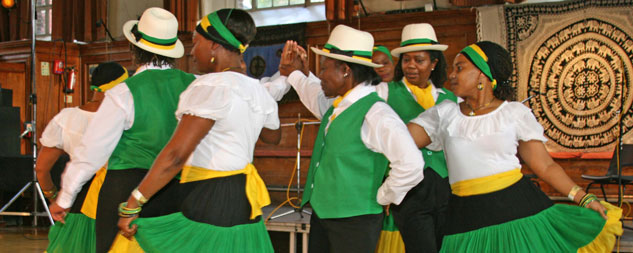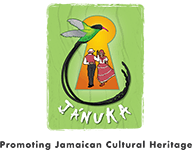 This is Part 3 of a list of 15 dance figures/sets. You can read Part 1, Part 2 and Part 4 for the full list.
This is Part 3 of a list of 15 dance figures/sets. You can read Part 1, Part 2 and Part 4 for the full list.
Part C
10. Vertical Maypole
Couples join arms and hands to form the shaft of the Maypole, and dance in close proximity in ‘turnstile’ movements at centre stage, before returning to their base.
Historical relevance
The Maypole dance began in ancient Babylon during sex worship and fertility rites. In England the Druids danced around the pole, a pagan phallic symbol, at the beginning of summer, (May Day) to celebrate life, fertility and ability to reproduce.
Some enslaved Africans (male and female) were specifically selected for their reproductive prowess to increase plantation stock or for sale at auctions.
Symbolism
In this dance we demonstrate our ancestors’ strong sense of purpose that includes their fertility rites, value of human life and strong determination to survive as an ethnic/racial group, through the continuation of their bloodline.
11. Circular Maypole
Couples dance in a circle with men’s right or left hand raised above their heads to form the pole, and women rest their right or left hand on men’s shoulders as they dance clockwise and anti–clockwise. Couples feet create diamond patterns on the dance floor.
Historical relevance
Enslaved Africans from different parts of Africa and tribal groupings had to work together, support each other, and build their homes and plantation communities.
Many enslaved Africans subversively used the circular dance and its musical accompaniment to revert to their ritualistic African cultural norms of communication, and indulgence in their spiritual and religious practices that were not allowed.
Symbolism
In this dance we demonstrate our ancestor’s unity, interdependence, discipline and strength in establishing solid foundations for their homes and communities. The women’s hands on men’s shoulders is symbolic of the need for supportive relationships, the re-creation of family units, or even a shoulder to lean on when times are hard.
We also demonstrate their determination to secretly continue their ritualistic custom and tradition in religious and spiritual practices.
12. Grand Chain / Closed Chain / Cross Over Chain
Couples greet and reel each other as they frivolously dance around in circles, square or cross over chains.
Historical relevance
Africans were shackled to restrict their movements on slave ships and plantations, thus preventing them from escaping servitude or as a form of punishment. Chains are symbolic of the horrendous physical and mental abuse our ancestors endured. Chaining was able to control their physical self, but not their minds and spirit.
After approximately 3 centuries of British power and control, the chains of slavery were broken when in 1807 The Abolition of the Slave Trade Act made it illegal for Africans to be sold into slavery.
Symbolism
In this dance we demonstrate that severing the chains to our past can restore options for our future. Chaining is therefore symbolic of binding people together as one, in peace, love and harmony. We demonstrate our ancestors’ endurance, solidarity, strength and unity.
13. Extended Greetings
Dancers appear jubilant and celebratory as they dance around in a circle and return to their partners with joyful greetings.
Historical relevance
Jubilation is symbolic of spiritual enlightenment and happiness in sharing of Intelligence that
liberation from slavery was within their sights. There was great jubilation because they believed freedom from slavery was attained. However The Slavery Abolition Act of 1833 that became law in Jamaica in 1834 did not give total freedom to the Africans. They were expected to continue working for their enslavers as apprentices without pay for a period of 4 – 6 years, in exchange for some food, poor housing, discarded clothing, limited medical attention and a plot of land to cultivate their own ground provisions.
Full emancipation from slavery was achieved in 1st August 1838, but with no financial compensation to rebuild their lives. Despite this unfair treatment they were overjoyed and congregated in villages, towns and churches to celebrate the end of enslavement.
Symbolism
In this dance we demonstrate our ancestors’ patience and faith in their belief that eventually justice would prevail and their right to self -determination restored. Freedom was more important than money!




